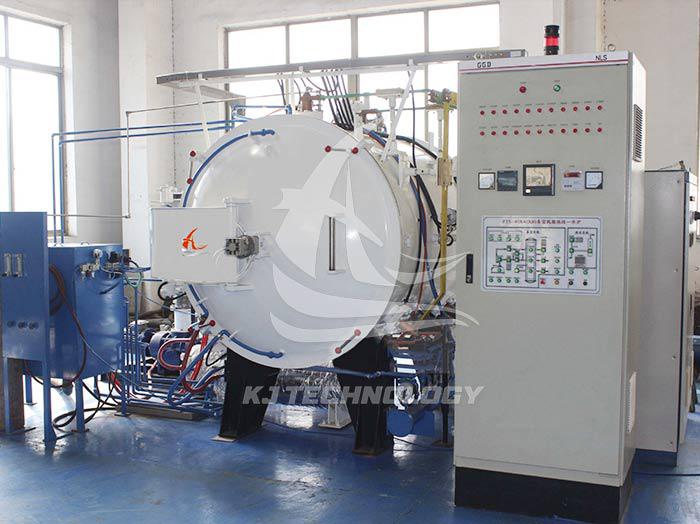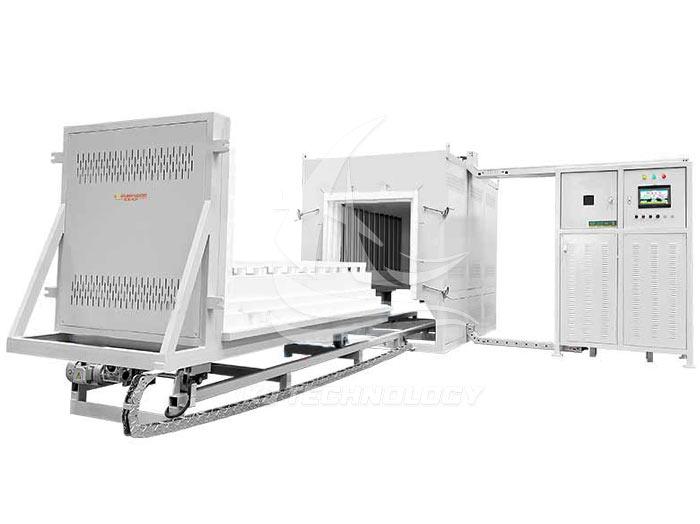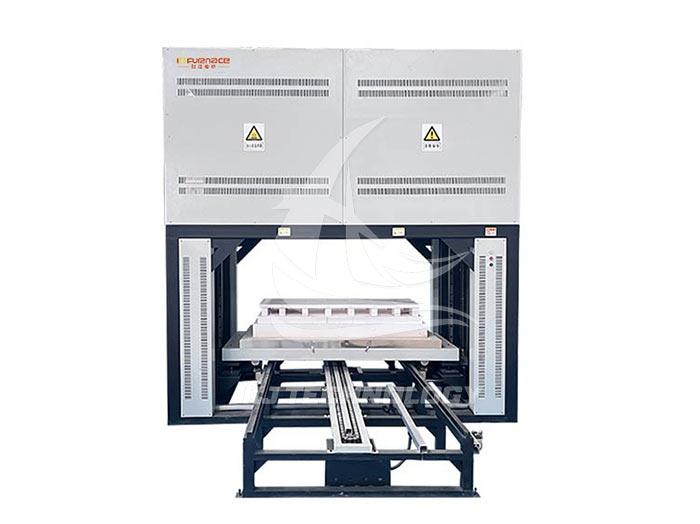Can a lab graphite furnace be used for sintering experiments?
 10-23-2025 Author: KJ technology
10-23-2025 Author: KJ technology
The laboratory graphite vacuum furnace can be fully used for sintering experiments. Its high temperature, vacuum or controllable atmosphere environment, excellent material adaptability, and precise temperature control capability make it an ideal equipment for sintering processes. The following is a specific analysis:
1. Core advantages of laboratory graphite vacuum furnace for sintering
High temperature capability covers sintering requirements
The sintering temperature usually needs to reach 50% to 70% of the material's melting point. The maximum temperature of the laboratory graphite vacuum furnace can reach 1600 ℃~2300 ℃ (even higher for high-end equipment), which can meet the sintering needs of various materials such as metals, ceramics, and composite materials. For example:
Metal powder sintering: iron-based and copper based alloys (800 ℃~1200 ℃);
Ceramic sintering: alumina (1500 ℃~1650 ℃), silicon nitride (1700 ℃~1850 ℃);
Hard alloy: tungsten cobalt (WC Co) alloy (1400 ℃~1500 ℃).
Vacuum or controlled atmosphere environment inhibits oxidation
During the sintering process, metal or ceramic powders are prone to react with oxygen at high temperatures to form oxide films, leading to a decrease in density. The graphite vacuum furnace can solve this problem through the following methods:
High vacuum (≤ 10 ⁻³ Pa): completely eliminate oxygen and avoid oxidation;
Inert gas protection (such as argon, nitrogen): suitable for materials sensitive to vacuum (such as certain ceramics);
Reductive atmosphere (such as hydrogen): used for reducing metal oxide powders (such as iron powder).
Uniform heating and precise temperature control
Graphite heating elements combined with advanced temperature control systems (such as PID control) can achieve temperature uniformity within ± 5 ℃ in the furnace, avoiding abnormal grain growth or cracking caused by local overheating and improving the performance of sintered bodies.
Wide adaptability of materials
Graphite furnace has no pollution to metals, ceramics, composite materials, etc., and can adapt to workpieces of different shapes (such as powder compacts, shaped parts), meeting diverse sintering needs.
2. Specific application scenarios of laboratory graphite vacuum furnace sintering
Metal powder sintering
Iron based powder metallurgy parts: sintering automotive gears, bearings, etc., reducing porosity, improving density and strength by controlling the atmosphere (such as cracking ammonia degreasing+vacuum sintering).
Titanium alloy sintering: Ti-6Al-4V powder is sintered under vacuum to prepare medical implants (such as artificial joints), avoiding the decrease in biocompatibility caused by oxidation.
Refractory metal sintering: melting high melting point metal powders such as tungsten and molybdenum to prepare high-temperature resistant components such as electrodes and nozzles.
Ceramic sintering
Alumina ceramics: sintered under vacuum or nitrogen atmosphere to prepare high hardness and corrosion-resistant ceramic cutting tools and bearings.
Silicon nitride ceramics: High temperature structural ceramics (such as turbine rotors) are prepared by reaction sintering (Si ∝ N ₄+Si powder) or pressure sintering (N ₂ atmosphere).
Transparent ceramics: YAG (yttrium aluminum garnet) powder is sintered under vacuum to prepare high transmittance laser crystals.
Hard alloy sintering
Tungsten cobalt (WC Co) alloy: Sintering a mixture of tungsten carbide and cobalt powder under vacuum to prepare cutting tools and molds, and adjusting hardness and toughness by controlling the cobalt content (6%~30%).
Steel bonded hard alloy: sintering TiC or WC particles with steel matrix composite powder to prepare wear-resistant parts (such as rolling mills).
Composite material sintering
Metal matrix composites (MMC): Ceramic particles (such as Al ₂ O ∝, SiC) are embedded into aluminum or magnesium matrices, and their wear resistance and high-temperature stability are improved through vacuum infiltration sintering.
Ceramic matrix composites (CMC): Carbon fiber reinforced silicon carbide (C/SiC) composites are prepared by impregnating carbon sources under vacuum for use in aerospace hot end components.
Sintering of functional materials
Piezoelectric ceramics: sintering lead zirconate titanate (PZT) powder to prepare sensors and transducers.
Magnetic material: sintered neodymium iron boron (NdFeB) permanent magnet, whose magnetic properties are improved by controlling the oxygen content.
3. Example of experimental steps for graphite vacuum furnace sintering in the laboratory
Powder pretreatment
Mixing: Mix metal/ceramic powder evenly with binders such as paraffin and polyvinyl alcohol.
Pressing: Using cold isostatic pressing or compression molding to prepare green bodies (with a density typically ranging from 50% to 70% of theoretical density).
Furnace loading and parameter setting
Place the green body on a graphite mold or alumina firing plate to avoid direct contact with the furnace.
Set the heating curve:
Defatting stage: Slowly raise the temperature to the volatilization temperature of the adhesive (such as 300 ℃~500 ℃), maintain for 1-2 hours, and eliminate organic matter.
Pre sintering stage: Heat up to 70%~80% of the sintering temperature (such as 1000 ℃) to promote necking between powder particles.
Sintering stage: Quickly raise the temperature to the target temperature (such as 1450 ℃), hold for 1-3 hours, and achieve densification.
Cooling stage: Cool along with the furnace or control the cooling rate (such as 5 ℃/min) to avoid thermal stress cracking.
Atmosphere control
Vacuumize to ≤ 10 ⁻ ³ Pa (or fill with high-purity argon gas to -0.05 MPa), and select the atmosphere according to the material type.
For cobalt containing hard alloys, they can be sintered under vacuum; For alumina ceramics, nitrogen can be filled to prevent aluminum volatilization.
post-processing
Remove residual adhesives (such as solvent cleaning, thermal degreasing).
Detect the properties of sintered bodies, such as density, hardness, shrinkage rate, and microstructure.
4. Precautions for laboratory graphite vacuum furnace sintering
Mold selection
When using graphite molds, pre oxidation treatment is required to reduce carbon pollution;
For high-temperature sintering (>1600 ℃), boron nitride (BN) or molybdenum molds can be used.
Heating rate control
Avoid rapid heating that may cause cracking of the green body, especially for large-sized or complex shaped workpieces.
Atmosphere purity
Regularly check the oil level and gas purity of the vacuum pump to prevent impurities such as oxygen and water vapor from entering.
safe operation
Wear heat-resistant gloves and goggles to avoid high temperature burns;
When handling hard alloys, pay attention to dust prevention (cobalt dust is harmful).








